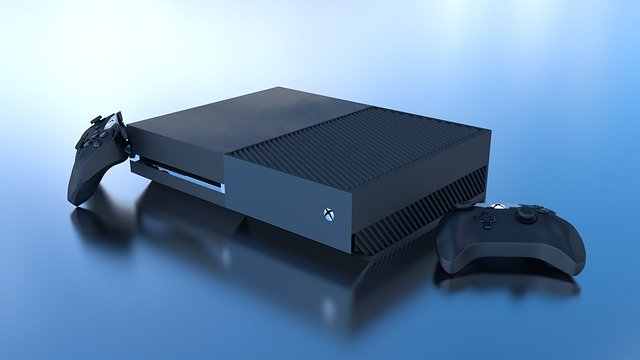
The establishment of Wi-Fi modems at home, in a working environment, and even in eateries brings about long EMF openness.
The length and vicinity to the openness of such gadgets expand hazards emerging from migraines to sleep deprivation to tumors.
What is insomnia
A sleeping disorder is a typical rest problem that can make it difficult to nod off, difficult to stay unconscious, or cause you to get up too soon and not have the option to return to sleep.
You may in any case feel tired when you awaken. Sleep deprivation can sap your energy level and mindset as well as your wellbeing, work execution, and personal satisfaction.
How much rest is sufficient differs from individual to individual, yet most grown-ups need seven to eight hours per night.
Eventually, numerous adults experience present moment (intense) sleeping disorder, which goes on for quite a long time or weeks. It’s generally the aftereffect of stress or a horrible accident.
However, a few people have long haul (persistent) sleep deprivation that goes on for a month or more. Sleep deprivation might be the essential issue, or it very well might be related to other ailments or drugs.
You don’t need to endure restless evenings. Basic changes in your day by day propensities can regularly help.
How does wifi work
WiFi works off of a similar head as other remote gadgets – it utilizes radio frequencies to impart signs between gadgets. The radio frequencies are totally extraordinary say from walky-talkies, vehicle radios, PDAs, and climate radios.
For instance, your vehicle sound system gets frequencies in Kilohertz and Megahertz range (AM and FM stations), and WiFi communicates and gets information in the Gigahertz range.
To separate it considerably further, Hertz (Hz) is essentially a unit of recurrence. Suppose you’re remaining on a dock watching waves come in. As you peer down at the waves you can see the peak of each wave move on by.
On the off chance that you tallied how long between each wave peak takes this would be the recurrence of the waves. So if the time between each peak was 1 second that would imply the wave recurrence was 1 hertz or one cycle each second.
Contrasting ocean waves with Mhz and Ghz, these waves are moving at 1 million and 1 billion cycles each second noticeable all around!
Furthermore, to get the data found in these waves, your radio beneficiary should be set to get influxes of a specific recurrence.
For WiFi this recurrence turns out to be 2.4Ghz and 5Ghz. These waves are fundamentally the same as the recurrence found in your microwave!
Your microwave utilizes 2.450Ghz to warm up food and your switch utilizes 2.412 GHz to 2.472 GHz to communicate your information over WiFi.
This is the reason a few people with old or flawed microwaves experience an issue with their WiFi signal when they attempt to make popcorn.
How wifi can relate to sleep disorders
Inordinate web use is related to rest disruption. Sleep hardship can prompt negative results, for example, exhaustion and even an undermined invulnerable framework.
As proposed by Dr. Youthful, the inactive idea of being on the web for exorbitant timeframes can likewise prompt an absence of activity and higher danger for carpal passage disorder, back strain, and eye strain.
Getting to the web through a cell phone when in bed may make it harder for your psyche to unwind, further restraining rest.
Also, the electromagnetic radiation related to cell phones has been found to defer melatonin discharge.
Over the top openness to blue light discharged from the screens of web associated gadgets can likewise upset the rest wake cycle, making rest more troublesome.
At the point when our inward body tickers become disturbed, we may even build up a circadian mood rest issue, for example, deferred rest stage issue, which can additionally intensify the wellbeing impacts of lack of sleep.
Can wifi affect the brain?
Unrestricted WiFi openness is known to be related to disturbed learning and memory, lack of sleep, and exhaustion identified with decreased melatonin discharge and expanded norepinephrine emission around evening time.
Be that as it may, the utilization of any screen time is likewise connected with these changes.
Cerebrum action recorded by electroencephalography has indicated blended outcomes in with WiFi, with repudiating contemplates demonstrating neuropsychiatric changes or no impact with WiFi use.
Curiously, a new report has demonstrated that drawn-out openness to WiFi radiation can improve the psychological elements of mice with Alzheimer’s illness like impeded cognizance.
In small kids, it has been discovered that the radiofrequency electromagnetic radiation transmitted by versatile and cordless telephones doesn’t create any passion or conduct issues.
In any case, a more significant level of radiation openness from cell phone base stations is known to be related to maternal-detailed conduct and passionate issue in small kids.
Notwithstanding a few early investigations with respect to the conceivably pernicious impacts of WiFi openness, it is too soon to reach inferences about conceivable wellbeing hazards.
The sign forces utilized in the greater part of the investigations are altogether higher than the real natural openness levels.
As per the writing, the radiofrequency signals created from remote base-stations and other nearby remote organizations are settling for less. Hence, more steady proof is expected to successfully assess the impacts of WiFi openness on the human body.
Sleeping with wifi routers
It is okay to rest close to a remote switch as it produces radio waves that, dissimilar to X-rays or gamma beams, don’t break substance bonds or cause ionization in people.
All in all, radio waves don’t harm the DNA of human cells. Harmed DNA can prompt disease.
While the radio waves from a switch work in a similar 2.4-5GHz electromagnetic range as microwaves, the switch works at much lower power levels than microwaves.
These waves likewise fall apart quickly, losing their solidarity as they travel away from the switch.
Contrasted with different wellsprings of electromagnetic radiation, remote switches rank a lot lower than gadgets, for example, cell phones, particularly as handsets are frequently held against the ear.
As indicated by the World Health Association (WHO), researchers have discovered “no antagonistic wellbeing impacts from low-level, long haul openness to radio recurrence”.
WHO likewise says that openness to radio waves at regular ecological levels doesn’t build the danger of any unfavorable result, for example, unconstrained early terminations, distortions, low birth weight, and inherent infections for pregnant ladies.


